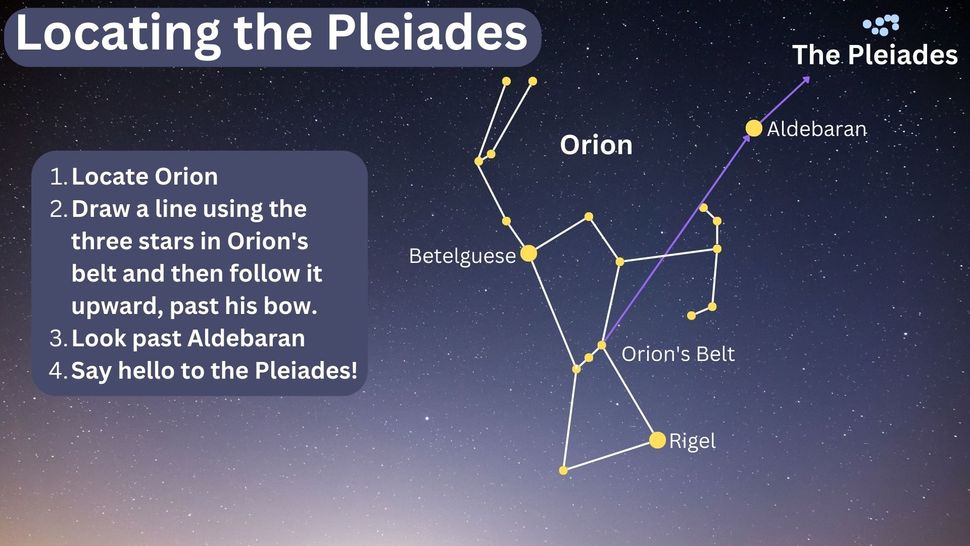Two of the most popular sights in the night sky will join up tonight in a gorgeous pairing.
The four-day-old waxing crescent moon will be positioned just below the Pleiades star cluster, also known as Messier 45 or simply M45. The two will be separated by around just 3 degrees, equal to a few finger widths if your arm is stretched out. That’s close enough for the pair to be seen together through binoculars or through a telescope with a suitably low-magnification eyepiece.
The pairing will be visible as soon as the sun sets and will remain visible until they set shortly after midnight local time, at which point the moon will have moved in front of the stars of the Pleiades.
Related: Night sky, March 2024: What you can see tonight
Located in the constellation Taurus, the Bull, the Pleiades star cluster is one of the night sky’s most popular asterisms, or patterns of stars. While only the brightest stars in M45 are visible to the unaided eye, the cluster contains more than 1,000 stars in total.
It is what’s known as an open star cluster, meaning it’s a loosely-bound collection of stars that are roughly the same age. It’s estimated that the stars of the Pleiades are between 75 and 150 million years old. Open star clusters typically contain a few hundreds or thousands of stars, compared to globular clusters which can contain thousands to millions of stars.

The Pleiades are also known as the “Seven Sisters,” a name based on a Greek legend in which the seven daughters of the ocean nymph Pleione and Atlas were turned into doves so they could fly into the heavens and escape the hunter Orion.
Just below the moon and the Pleiades tonight, a little over a fist’s width at arm’s length, Jupiter will be shining brightly with a pale yellow glow beside the horns of Aires, the Ram.
The moon is currently waxing, meaning its illuminated portion is growing larger as it approaches its half-lit first quarter phase on Sunday (March 17). Following that, the moon will reach its full phase on March 25 with the Full Worm Moon, which will also see a penumbral lunar eclipse.
If you’re hoping to catch a look at the Pleiades near the crescent moon — or anything else in the night sky, for that matter — our guides to the best telescopes and best binoculars are a great place to start. If you’re looking to snap photos of the night sky in general, check out our guide on how to photograph the moon, as well as our best cameras for astrophotography and best lenses for astrophotography.
Editor’s Note: If you snap an image of the moon near the Pleaides and would like to share it with Space.com’s readers, send your photo(s), comments, and your name and location to spacephotos@space.com.